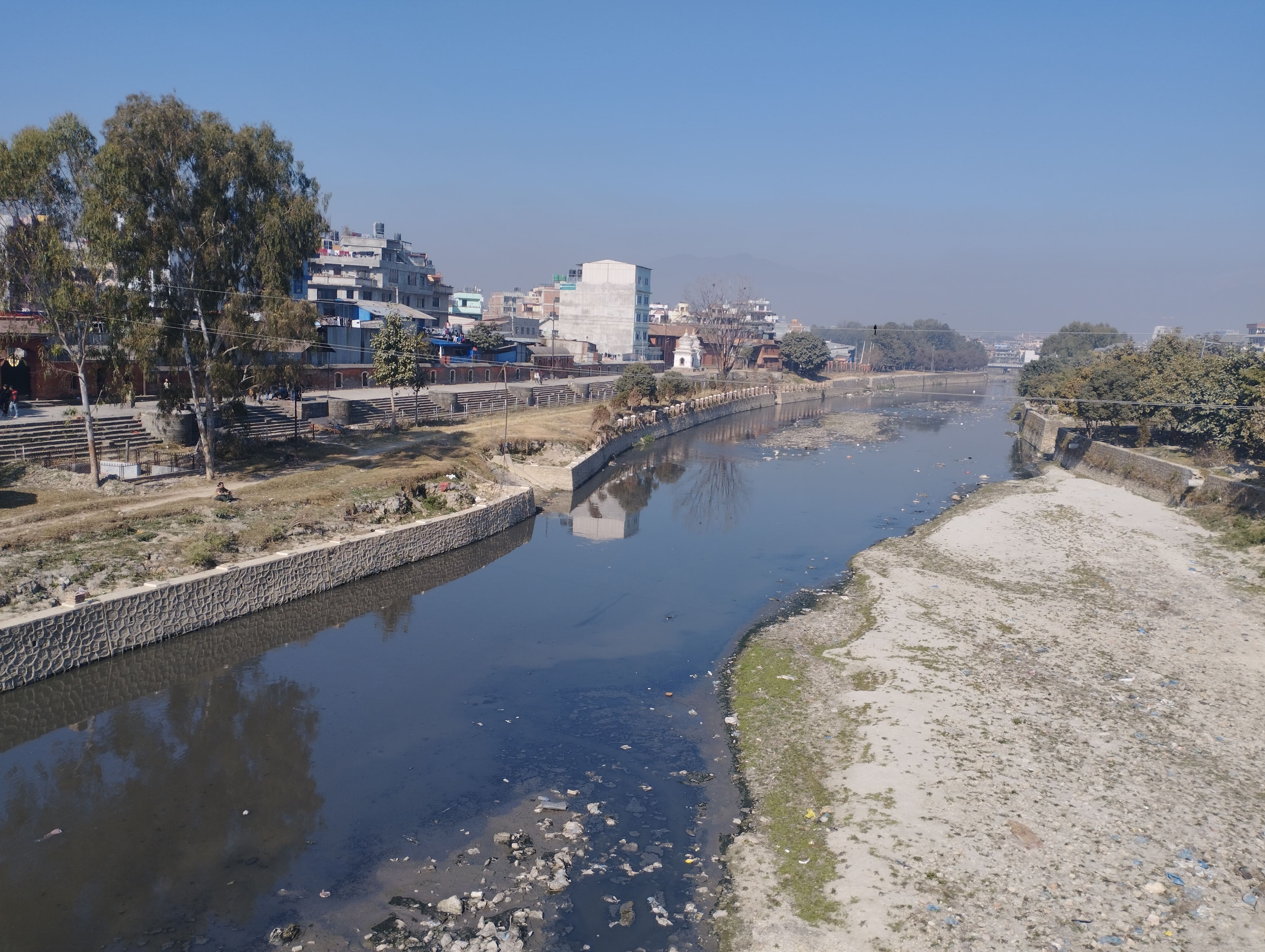Kathmandu, January 22 – Once revered as the lifeblood of the Kathmandu Valley, the Bagmati River, which flows serenely past sacred temples and bustling urban settlements, now faces an existential crisis. Pollution, encroachment, and unsustainable urban development have reduced this sacred river to a shadow of its former self.
The Bagmati River originates from Baghdwar in the lush Shivapuri Hills, carrying with it immense religious and cultural significance. Its water cleanse the soul, cradle the dead, and are a symbol of Nepal’s ancient traditions. However, as the valley grows into a modern metropolis, the very existence of this cultural and environmental treasure hangs in the balance.
The Sacred Stream Struggles for Breath
A walk along the Bagmati’s banks reveals the harsh realities of unchecked urbanization and neglect. Sewage pipes spew untreated waste, while piles of plastic and debris clog the river’s flow. What was once a pristine river now resembles an open sewer in many sections. The decline has not only affected the river’s ecosystem but has also eroded its spiritual significance. Rituals that depended on clean water now occur amidst an environment of decay.
In addition to pollution, encroachment along the riverbanks has disrupted its natural flow. Illegal settlements, commercial structures, and infrastructure development have narrowed the riverbed, increasing the risk of flooding during monsoons.
Voices of Concern
Environmental experts warn that the Bagmati’s condition mirrors the challenges faced by urban rivers worldwide. Dr. Anil Shrestha, a hydrologist, emphasizes, “The Bagmati is not just a river; it’s a cultural and environmental legacy. Its degradation is a wake-up call for better urban planning and sustainable resource management.”
Community activists and local organizations are also voicing concerns. “The river doesn’t just belong to Kathmandu; it belongs to all of us,” says Shristi Adhikari, a volunteer with the Bagmati Clean-Up Campaign. “If we lose the Bagmati, we lose a part of our identity.”
Hope Amidst the Crisis
Despite its dire state, efforts to rejuvenate the Bagmati are gaining momentum. The Bagmati Clean-Up Campaign, which started as a small community effort, has grown into a weekly movement involving thousands of volunteers. Similarly, the Bagmati River Basin Improvement Project aims to address long-term issues such as sewage treatment, riverbank restoration, and sustainable water management.
The government has also introduced the Bagmati Action Plan, outlining strategies to restore the river’s health. However, experts argue that implementation has been slow and fragmented. A coordinated effort, involving stricter regulations and active public participation, is essential for meaningful change.
The Road Ahead
Reviving the Bagmati requires more than just clean-up campaigns and policies; it demands a cultural and behavioral shift. Citizens, policymakers, and businesses must come together to treat the river with the respect it deserves.
As Kathmandu expands, the Bagmati serves as a poignant reminder of the cost of neglecting our natural and cultural heritage. The river’s story is not just a tale of loss but also a call to action. It’s a chance for the people of Nepal to reclaim their sacred river and, in doing so, preserve a piece of their identity for generations to come.
For now, the Bagmati flows on, burdened yet resilient, waiting for the day when its waters will once again flow clear and pure.
(This report is part of Ecosphere News’ commitment to raising awareness about environmental and cultural issues affecting Nepal. Stay tuned for more updates on community efforts and policy developments.)